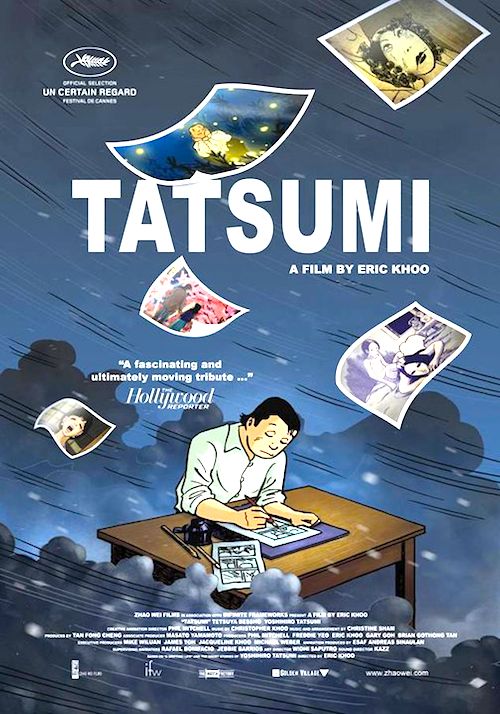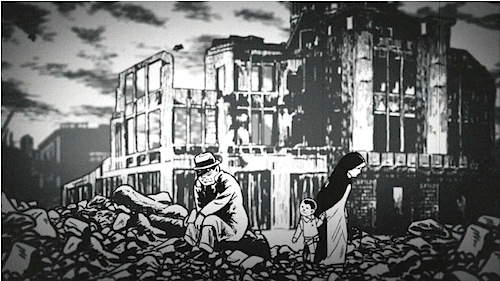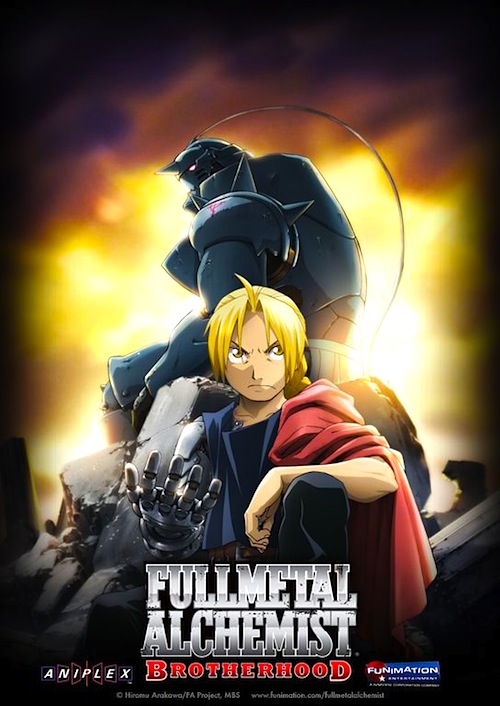 By Joe Bendel. Yoshihiro Tatsumi could be called the Japanese Will Eisner. Tatsumi was the leading exponent of Gekiga, or serious manga that tackled adult story lines. Americans who are very hip or awfully geeky will already know Tatsumi’s work, particularly his Eisner winning graphic novel-autobiography, A Drifting Life. For the rest of us, Singaporean Eric Khoo’s Tatsumi (trailer here) serves as a compelling introduction to his career and stories. Singapore’s official submission for best foreign language Academy Award consideration, Khoo’s animated tribute-biography screens at the San Francisco Film Society’s upcoming 2011 San Francisco International Animation Festival.
By Joe Bendel. Yoshihiro Tatsumi could be called the Japanese Will Eisner. Tatsumi was the leading exponent of Gekiga, or serious manga that tackled adult story lines. Americans who are very hip or awfully geeky will already know Tatsumi’s work, particularly his Eisner winning graphic novel-autobiography, A Drifting Life. For the rest of us, Singaporean Eric Khoo’s Tatsumi (trailer here) serves as a compelling introduction to his career and stories. Singapore’s official submission for best foreign language Academy Award consideration, Khoo’s animated tribute-biography screens at the San Francisco Film Society’s upcoming 2011 San Francisco International Animation Festival.
Tatsumi was ten when World War II ended. Somewhat logically, the American occupation and economic revival of Japan would factor prominently in his life and that of his characters. Khoo intersperses five notable Tatsumi stories, mostly in black-and-white, amid his vivid color adaption of the Gekiga pioneer’s memoir. Psychologically complex and deeply flawed, it is clear how Tatsumi’s characters were shaped by their creator’s experiences. In fact, it is easy to conflate them with Tatsumi, particularly the unfortunate artist in Occupied.
Each of the five would stand alone as satisfying self-contained short films. However, the most powerful of the collected stories comes first, by virtue of chronology. Hell forthrightly addresses the horrors of Hiroshima and its aftermath, but it takes viewers to some unexpectedly dark places, undercutting simplistic moral judgments. Throughout all five stories, there is a profound sense of alienation, often prodding the protagonists to commit shockingly anti-social acts out of existential compulsion, but their actions are always understandable, in a sadly human way.

Though his life was never as lurid as that of his marginalized characters, Tatsumi’s early years were marked by considerable pain and want. Khoo structures the film in a way that really emphasizes how these struggles instilled a humanistic empathy in Tatsumi, embracing those who were downtrodden and even grotesque. Ultimately, it is rather inspiring to see the artist rise from such mean circumstances to become an acknowledged leader of his field.
Rendered by Singapore-based creative animation director Phil Mitchell in a style akin to Tatsumi’s, the film’s animation is deceptively simple, but eerily expressive. Tatsumi’s warm voice also narrates the biographical portions of the film bearing his name, forging a further connection with viewers.
It really says something when Singapore’s film establishment selects a film about a Japanese artist to represent the country with Academy Award voters. Yet, the film’s undeniable artistry and Khoo’s international reputation had to be a compelling combination leading to its submission. Indeed, this is a richly rewarding film that deserves serious consideration. Not just for manga readers, Tatsumi is enthusiastically recommended for broad-based general audiences when it screens this Friday (11/11) and Sunday (11/13) as part of the SFFS’s International Animation Festival at the New People Cinema.
•
Lead into gold is small potatoes. Alchemists young and old practice a far more Faustian version of their craft in Kazuya Murata’s Fullmetal Alchemist: The Sacred Star of Milos (trailer here), the second full length feature set in the popular anime universe, which concludes the San Francisco Film Society’s 2011 San Francisco International Animation Festival this Sunday.
 For the uninitiated: a risky rite intended to resurrect their late mother cost alchemist Edward Elric an arm and a leg. It cost his brother Alphonse his entire body. With Al’s soul imprinted on a Doctor Doom like suit of armor and Edward spruced up with some Skywalker prosthetics, the two lads became more judicious in their alchemy. Appointed official State Alchemists of Amestris, the Elrics have a license to snoop. For fans, of course, this is all ancient history.
For the uninitiated: a risky rite intended to resurrect their late mother cost alchemist Edward Elric an arm and a leg. It cost his brother Alphonse his entire body. With Al’s soul imprinted on a Doctor Doom like suit of armor and Edward spruced up with some Skywalker prosthetics, the two lads became more judicious in their alchemy. Appointed official State Alchemists of Amestris, the Elrics have a license to snoop. For fans, of course, this is all ancient history.
Sacred’s story kicks off with a mysterious prison break. Previously unbeknownst to the authorities, the fugitive is an alchemist, who quietly served over four years of a five year sentence, but then suddenly up and left. The Elrics track him to Table City, a fortress-like metropolis currently under Amestris control within the militaristic Creta state. Table City is surrounding by a deep canyon, known as the valley, where Creta banished the people of Milos, the original city occupants during their brief possession of the city. While they no longer control Table City, they still oppress the descendants of Milos. That includes Julia Crichton, a young alchemist involved in the resistance, whose long lost brother evidently just broke out of an Amestris jail.
Set between the cracks of the anime series, Sacred’s world resembles a steampunk Flash Gordon. Indeed, the architecture of Table City and the network of canyons and elevated train tracks surrounding it are cool looking, particularly by series anime standards. The winged Black Bat freedom fighters are also reminiscent of Prince Vultan’s Hawkmen, giving it further retro appeal for first time viewers.
Depicting a fight for freedom and the destructive lure of absolute power, Sacred addresses some worthy themes. It also gives the prodigal brother trope a bit of a twist. Of course, since it is anime, the responsibility of saving Milos naturally falls to three thirteen year-olds, more or less. However, the often immature and rather loud fan-favorite protagonist Edward Elric must be an acquired taste.
Aside from a fairly standard standoff featuring alchemists hurling the usual energy bolts at each other, Sacred is a quite watchable, largely self-contained anime feature. For fans, it reveals another hidden corner of a richly detailed world. For newcomers, it is a lot like 1930’s space serials, with steam engines. A respectable anime fix for genre fans, Sacred concludes the SFFS’s International Animation Festival Sunday night (11/13) at the New People Cinema.
Posted on November 11, 2011 at 8:37am.